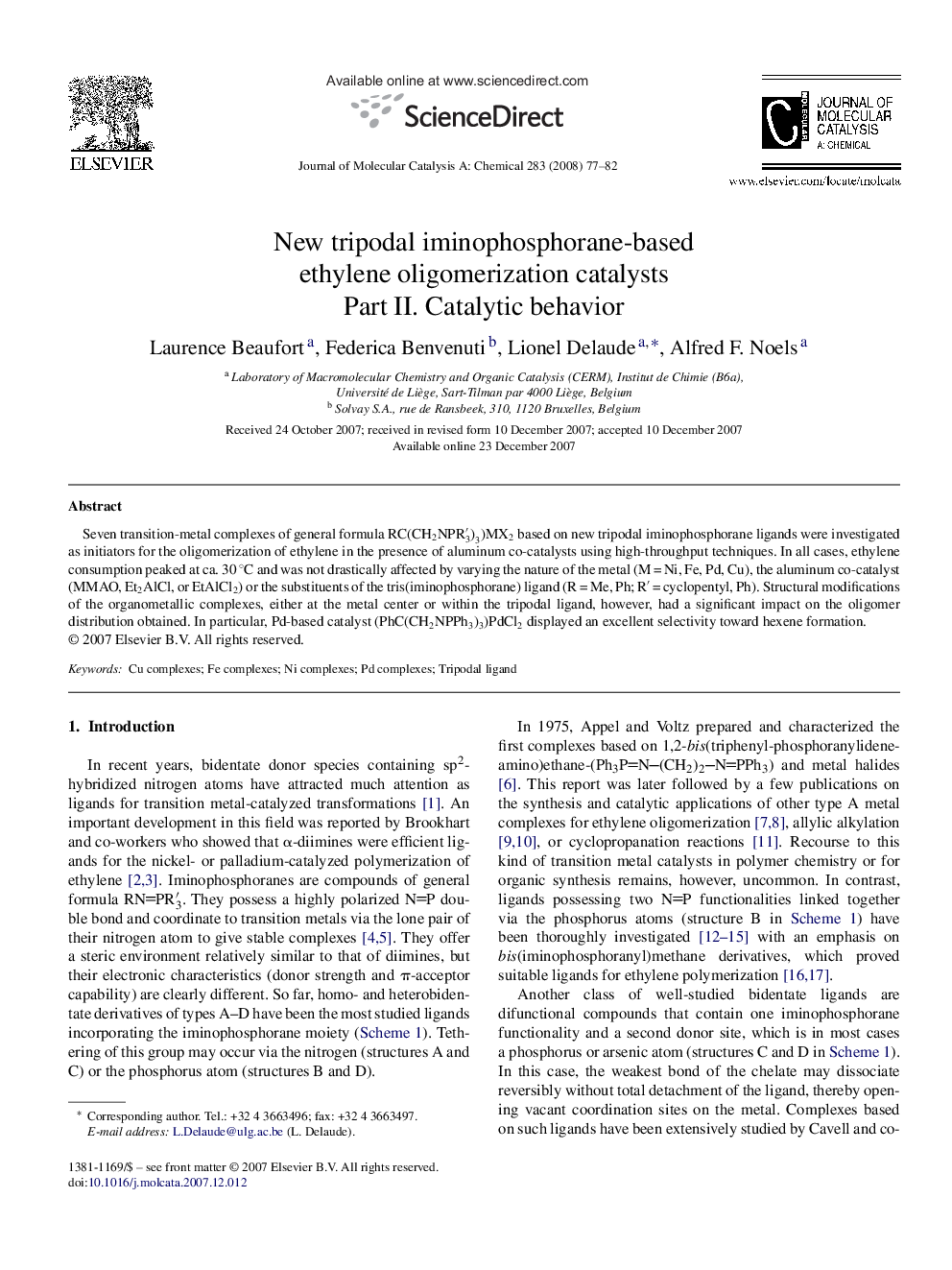| Article ID | Journal | Published Year | Pages | File Type |
|---|---|---|---|---|
| 68066 | Journal of Molecular Catalysis A: Chemical | 2008 | 6 Pages |
Seven transition-metal complexes of general formula RC(CH2NPR′3)3)MX2RC(CH2NPR′3)3)MX2 based on new tripodal iminophosphorane ligands were investigated as initiators for the oligomerization of ethylene in the presence of aluminum co-catalysts using high-throughput techniques. In all cases, ethylene consumption peaked at ca. 30 °C and was not drastically affected by varying the nature of the metal (M = Ni, Fe, Pd, Cu), the aluminum co-catalyst (MMAO, Et2AlCl, or EtAlCl2) or the substituents of the tris(iminophosphorane) ligand (R = Me, Ph; R′ = cyclopentyl, Ph). Structural modifications of the organometallic complexes, either at the metal center or within the tripodal ligand, however, had a significant impact on the oligomer distribution obtained. In particular, Pd-based catalyst (PhC(CH2NPPh3)3)PdCl2 displayed an excellent selectivity toward hexene formation.
Graphical abstractSeven transition-metal complexes based on new tripodal iminophosphorane ligands were investigated as initiators for the oligomerization of ethylene in the presence of aluminum co-catalysts using high-throughput techniques. Structural modifications, either at the metal center or within the tripodal ligand, did not markedly affect the catalytic activity but had a significant impact on the oligomer distribution.Figure optionsDownload full-size imageDownload as PowerPoint slide
